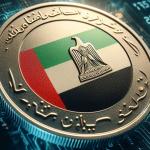For millennia, the vast, open skies above the Arabian Peninsula have been a source of wonder and inspiration, navigated by stars for trade and travel. Today, that celestial fascination has taken a giant leap, as the United Arab Emirates (UAE), a nation that rose from the desert, is now charting a bold course into the cosmos. What was once the realm of science fiction has rapidly become a tangible reality, with the UAE emerging as a serious and ambitious player in the field of space exploration, a testament to its visionary leadership, strategic investments, and an unwavering belief in the power of science and technology.
The UAE's journey into space is not a fleeting endeavor but a carefully calculated long-term strategy aimed at diversifying its economy, fostering scientific innovation, inspiring future generations, and contributing to global knowledge. From the groundbreaking Emirates Mars Mission (Hope Probe) to ambitious lunar aspirations and the development of a national space program, the UAE is demonstrating that geographical constraints are no barrier to reaching for the stars.
From Satellite Dreams to Interplanetary Ambitions: The Genesis of the UAE Space Program
The UAE's foray into space began in a measured but determined manner. Its initial involvement focused on satellite technology for communication and Earth observation, laying the foundational infrastructure and expertise. However, the ambition to venture beyond Earth orbit signaled a profound shift in its strategic outlook.
The establishment of the UAE Space Agency in 2014 marked a pivotal moment. This dedicated government body was tasked with overseeing and guiding the nation's burgeoning space sector, setting ambitious goals and fostering collaborations both domestically and internationally. The creation of the Mohammed Bin Rashid Space Centre (MBRSC) served as the primary hub for the design, development, and operation of space missions, becoming the driving force behind the UAE's most ambitious projects.
The announcement of the Emirates Mars Mission (EMM), also known as the Hope Probe , in 2014 was a watershed event. This audacious undertaking aimed to send an uncrewed spacecraft to Mars to study its atmosphere and climate. The very idea of a young nation, with limited prior experience in deep-space missions, setting such a challenging goal captured the world's attention.
The Hope Probe: Reaching the Red Planet and Beyond Expectations
The successful launch of the Hope Probe in July 2020 and its subsequent orbital insertion around Mars in February 2021 was a monumental achievement. Developed by a predominantly Emirati team, the Hope Probe was not just a technological feat but a symbol of the UAE's ambition and scientific capabilities.
- Scientific Objectives: The Hope Probe is providing unprecedented data about the Martian atmosphere, its seasonal changes, and its escape into space – crucial information for understanding Mars' past and potential habitability. Its unique orbit allows for a comprehensive global view of the planet, unlike many previous missions.
- Inspiring a Generation: The Hope Probe captured the imagination of the nation and the Arab world, inspiring a new generation to pursue careers in science, technology, engineering, and mathematics (STEM). The project actively involved educational outreach programs, engaging students and the public in the wonders of space exploration.
- International Collaboration: While spearheaded by the UAE, the Hope Probe benefited from collaborations with experienced international partners, showcasing a strategic approach to knowledge transfer and capacity building.
The success of the Hope Probe has not been the culmination but rather a powerful catalyst, fueling even bolder aspirations.
Aiming for the Moon: The Rashid Rover and Lunar Dreams
With the red planet in its sights, the UAE set its gaze on Earth's closest celestial neighbor. The Rashid Rover , a small, four-wheeled robotic explorer, was developed with the goal of landing on the Moon and studying its surface.
- Technological Advancement: The development of the Rashid Rover pushed the boundaries of Emirati engineering and robotics capabilities. The rover was designed to withstand the harsh lunar environment and conduct scientific investigations.
- International Partnership: The Rashid Rover was launched aboard a Japanese Hakuto-R lander in December 2022. While the landing unfortunately wasn't successful due to a malfunction with the lander, the mission represented a significant step forward for the UAE's lunar ambitions and provided invaluable learning experiences for its space program.
- Future Lunar Missions: Undeterred by the initial setback, the UAE has reaffirmed its commitment to lunar exploration. Plans for future lunar missions are underway, leveraging the knowledge and experience gained from the Rashid Rover project. The goal remains to contribute to lunar science and technology development.
Building a Sustainable Space Ecosystem: Investing in Infrastructure and Talent
The UAE's commitment to space exploration goes beyond individual missions. It involves building a comprehensive and sustainable space ecosystem within the nation.
- Developing Local Expertise: A key focus is on developing a skilled Emirati workforce in space science and engineering. Scholarship programs, partnerships with universities, and hands-on involvement in mission development are crucial components of this strategy. The success of the Hope Probe, led by a team with an average age of just 27, underscores the effectiveness of this approach.
- Establishing World-Class Facilities: The UAE has invested in state-of-the-art facilities for spacecraft design, assembly, testing, and mission control, primarily housed within MBRSC. These facilities provide the necessary infrastructure to support increasingly complex space endeavors.
- Fostering a Commercial Space Sector: Recognizing the potential of the commercial space industry, the UAE is actively encouraging the growth of private space companies and startups. This includes providing regulatory frameworks, funding opportunities, and fostering collaborations between government entities and the private sector.
- The National Space Strategy 2030: This comprehensive strategy outlines the UAE's long-term goals for the space sector, encompassing scientific research, technological development, economic diversification, and inspiring future generations. It provides a clear roadmap for the nation's space ambitions.
Looking Beyond: Future Ambitions and the Global Space Community
The UAE's space ambitions extend far beyond Mars and the Moon. The nation is actively exploring opportunities in various areas of space exploration and technology:
- Earth Observation and Sustainability: The UAE recognizes the importance of space-based technologies for monitoring Earth, addressing climate change, and promoting sustainable development. Future satellite missions are planned for enhanced Earth observation capabilities.
- Human Spaceflight: While no Emirati has yet journeyed to space independently, the UAE has participated in crewed missions through partnerships, and developing indigenous human spaceflight capabilities remains a long-term aspiration.
- Contributing to the Global Space Community: The UAE is an active member of the international space community, participating in conferences, sharing data, and collaborating on global space initiatives. This collaborative approach underscores its commitment to advancing space exploration for the benefit of all humanity.
- Inspiring the Arab World: The UAE's success in space serves as a powerful source of inspiration for the entire Arab world, demonstrating the potential for scientific and technological advancement in the region.
Conclusion: A New Cosmic Horizon for the UAE
From the Bedouin traversing the desert under a starlit sky to Emirati engineers designing spacecraft that journey millions of kilometers, the UAE's relationship with the cosmos has undergone a profound transformation. Its rapid ascent in the field of space exploration is a remarkable achievement, fueled by a clear vision, unwavering commitment, and a spirit of innovation that knows no bounds.
The "Sky's the Limit" is not just a metaphor for the UAE's space program; it's a guiding principle. As the nation continues to invest in its space infrastructure, nurture its talent, and pursue ambitious missions, it is not only reaching for the stars but also firmly establishing itself as a significant contributor to the new era of space exploration, proving that even a nation that emerged from the desert can leave its indelible mark on the vast canvas of the cosmos. The journey has just begun, and the world watches with anticipation as the UAE continues to push the boundaries of what is possible, one giant leap at a time.










